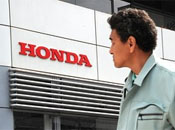
A few real-life scenes from the collapse of a Chinese economic strategy:
Scientists in Tokyo last week announced they have identified new deposits of so-called rare-earth metals some six kilometers below the ocean surface. These metalsóhard to extract and useful for high-tech applications from smart-phones to hybrid cars to wind turbinesówill not be easy or cheap to retrieve. But the rich concentrations found in the seabed silt promise a plentiful supply once the technology is developed to get to them.
Speaking of Japan, Honda earlier this month announced it has developed a new method for recycling rare-earth elements used in the batteries of hybrid cars. The company says it has been able to obtain the minerals at a 99% purity level, similar to buying them fresh from the ground. Although some media reports imply the process is slightly more expensive, the cost difference is said not to be prohibitive. Honda now will explore ways to commercialize the process.
Speaking of car batteries, Ford Motor announced last year that it has developed a new lithium-ion battery for its next-generation hybrids that uses dramatically less rare earths than previous technologies. Ford projects the new battery could reduce its consumption of rare-earth metals by as much as 500,000 pounds per year, and that in turn will help the carmaker reduce the cost of the hybrid cars.
Speaking of cost, sometime last year the notion began to circulate that China will one day become a net importer of the rare earth minerals for which it currently provides 90% of the global supply. China consumes some 65% of the world's rare earths, Reuters reported last year, compared to 25% a decade earlier. If it happens, this switch to net importer will be a sign that Beijing's export-blocking strategy of "encouraging" foreign manufacturers to locate plants in China (for want of available and affordable rare earths anywhere else) is working.
These four snapshots suggest rare earths aren't so different after all from any other good or service for which markets set prices and invisible hands allocate supply and regulate demand. This should be a teachable moment for Beijing. . .
Joseph Sternberg
Wall Street Journal



























































